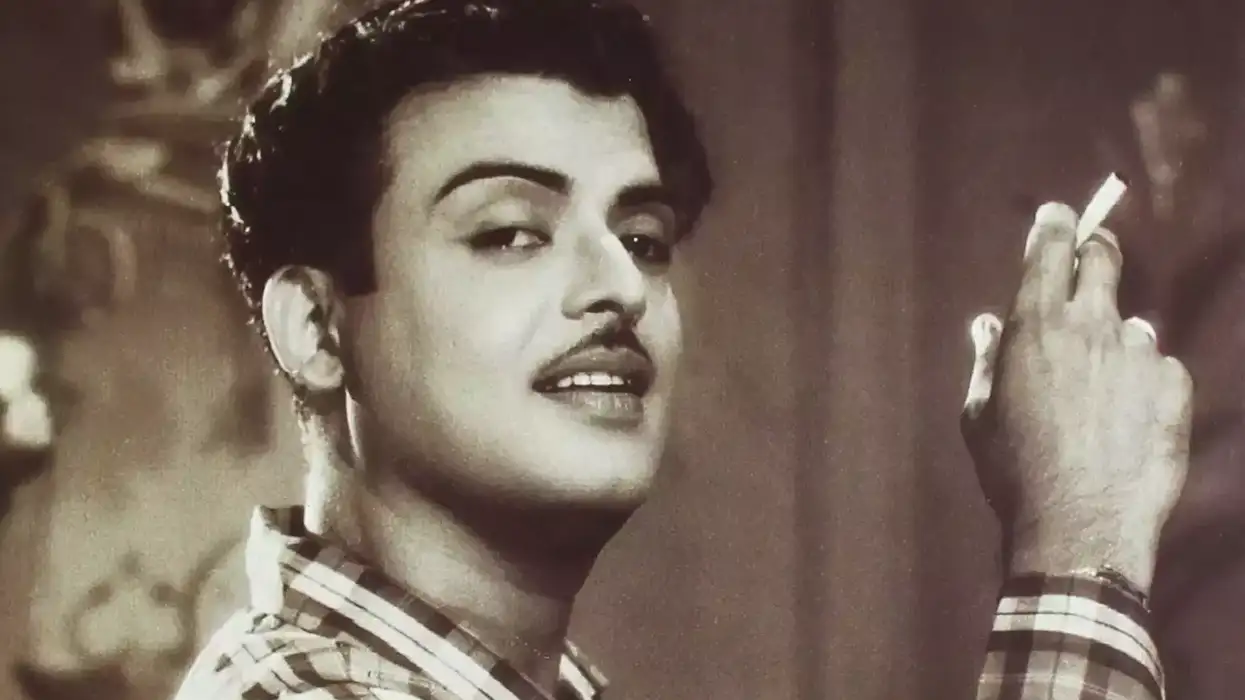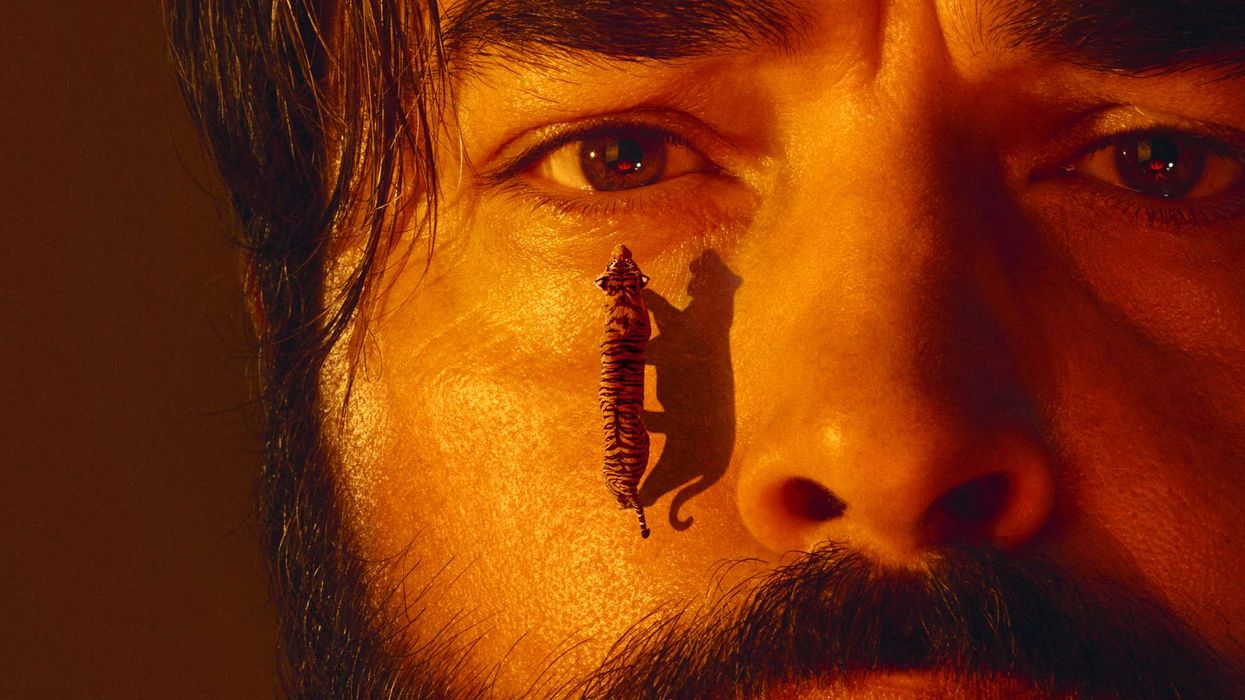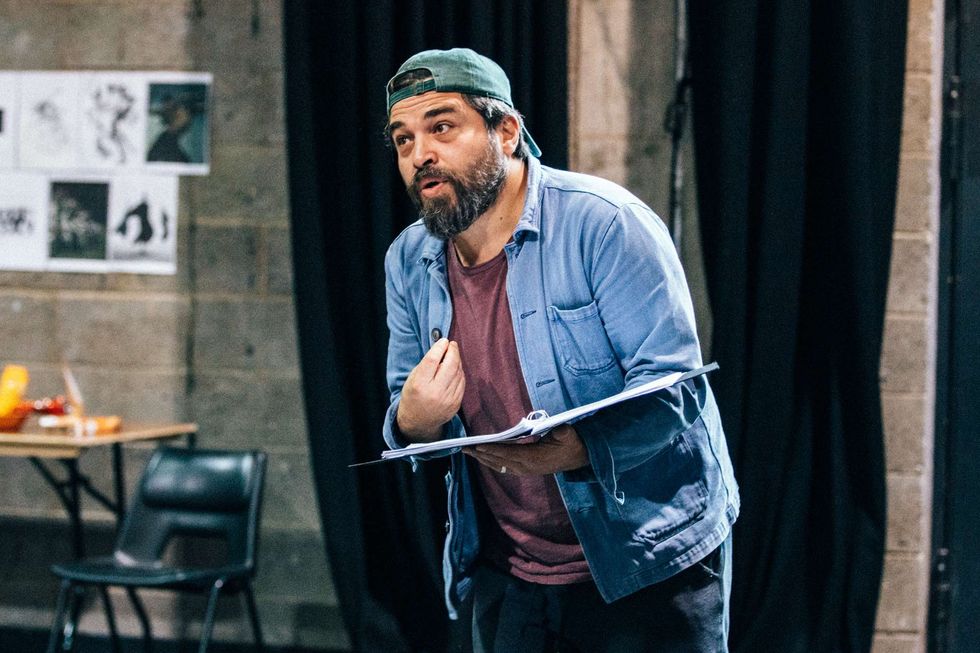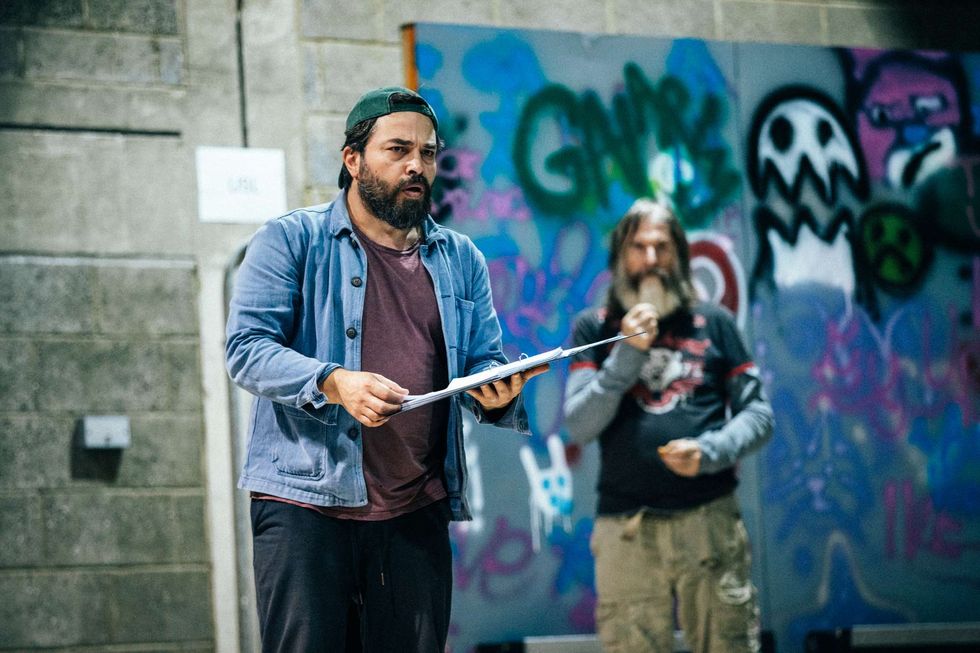GEMINI GANESAN captivated audiences with his screen presence and acting prowess in a frontline film career that lasted more than 50 years.
The Tamil cinema legend, known as the king of romance, combined an impressive body of acting work with a colourful personal life that included a rise from humble beginnings, high-profile liaisons and fathering an illegitimate child who became a Bollywood icon. Born on November 17, 1920, he passed away on March 22, 2005, aged 84 and received a state funeral.
Eastern Eye decided to mark the birth anniversary of the legendary Indian actor this week with an alphabetical guide to his life, from a troubled childhood to superstardom.
A is for Awards: Major honours not being around when he was at the height of his career meant the superstar actor won a limited number of awards. His most notable accolades included the Tamil State Film Award for best actor (Kaaviya Thalaivi), a Filmfare Award for best Tamil actor (Naan Avanillai) and Indian state honour, the Padma Shri. He also received multiple lifetime achievement awards.
B is for Beginning: The actor was born as Ramasamy Ganesan on November 17, 1920, in the Indian state of Tamil Nadu. He had a tough childhood after his father passed away, although he harboured dreams of a medical career.
C is for Chemistry: He married Alamelu in 1940, hoping that her father would help him become a doctor. But his father-in-law died within a month of their marriage and this forced him to find a job to support his family. Ganesan worked as a lecturer in the chemistry department of Madras Christian College.
Ganesan with his wife SavitriD is for Debut: He got a job working at Gemini Studios in 1947 and worked in the casting department. The aspiring actor made his debut playing a minor role in comedy satire Miss Malini (1947). He played further supporting roles and finally got noticed with a negative character in Thai Ullam (1953).
E is for Epic: Film director MA Thirumugam brought together superstar actors MG Ramachandran and Gemini Ganesan together for the only time with his movie Muharasi (1966), which was considered a landmark moment.
F is for First: His film Thennilavu (1961) was the first south Indian film to be shot in Jammu and Kashmir. It also popularised outdoor locations at a time when most movies were filmed in studios.
G is for Gemini: Legendary filmmaker SS Vasan launched Gemini Studios in 1940. The production house hired Ganesan, who incorporated the established film brand into his screen name.
H is for Hindi cinema: The Tamil superstar did a few Bollywood films. The most successful of these was hit comedy Miss Mary (1957), where he starred opposite legendary actress Meena Kumari. His extended cameo in Nazrana (1961) opposite Raj Kapoor and Vyjayanthimala was also appreciated.
I is for International: His movie Konjum Salangai (1962) was released globally and is thought to have been dubbed in 22 languages. It was the first Tamil film to be released in Poland (in a dubbed version).
J is for Jesus: The Tamil icon starred in Malayalam movies including Aana Valarthiya Vanampadiyude Makan (1971), Professor (1972), Sree Guruvayoorappan (1972) and Jesus (1973), which was based on the biblical story and saw him play John The Baptist.
K is for Kalathur Kannamma: He starred opposite his wife Savitri in smash hit romantic drama Kalathur Kannamma (1960). It was the debut movie of future superstar Kamal Haasan, who delivered a winning performance as a child actor.
L is for Longevity: The prolific actor connected with different generations during a career that lasted more than 50 years. Having started in 1947, one of his last major roles was in 1998 film Naam Iruvar Namakku Iruvar.
M is for Manam Pola Mangalyam: After playing supporting roles, Ganesan was cast as a hero for the first time in successful comedy film Manam Pola Mangalyam (1953). It launched him as a leading man and also became a turning point for actress Savitri, whom he would later marry. There are no surviving prints of the movie.
N is for No: Unlike most popular south Indian stars, Ganesan stayed away from politics. This included multiple approaches from major political parties to represent them in elections. He also turned down loads of Bollywood offers.
Kalathur KannammaO is for Older: The actor started playing character roles later in his career, including a notable performance in Avvai Shanmugi (1996), which was a hit remake of Hollywood comedy Mrs Doubtfire (1993). He also acted in long-running TV serial Krishnadasi as an older man.
P is for Passing: After a prolonged illness, resulting in multiple organ failures, Ganesan died on March 22, 2005, at the age of 84. He was cremated with full state honours.
Q is for Queens: Whether it was Saroja Devi, Pushpavalli, Padmini, Vyjayanthimala, Anjali Devi, B Saroja Devi or Devika Devadoss, he worked opposite the biggest leading ladies in Tamil cinema. He did the most films with his wife Savitri (see W) and they were also the most successful.
R is for Romantic: He was so admired for his onscreen passion and presence in love stories that Ganesan was bestowed with the title Kadhal Mannan, which means king of romance.
S is for Seetha: Seetha (1967) was his 100th film. He starred opposite his wife Savitri in the AP Nagarajan-directed drama, but it was met with mixed reviews, despite being hotly anticipated.
T is for Trinity: The actor was part of a trinity of leading men who ruled Tamil cinema, with MG Ramachandran and Sivaji Ganesan. Ramachandran was popular as an action hero, Sivaji excelled in dramatic films and Gemini was most known for romantic roles.
U is for Unacknowledged: He had a famous extramarital relationship with well-known actress Pushpavalli and had two daughters with her, including future Bollywood legend Rekha. The relationship ended because he refused to acknowledge Pushpavalli or his children. Rekha revealed her painful past after finding fame, and the rift with her estranged father never fully healed.
V is for Vanji Kottai Valipan: Legendary filmmaker SS Vasan made a return to Tamil cinema after a long gap with hit film Vanji Kottai Valipan (1958). Ganesan headlined the blockbuster opposite popular leading ladies Vyjayanthimala and Padmini. It was remade in Bollywood as Raj Tilak with the same lead cast later that year.
Manam Pola MangalyamW is for Wife: The actor tied the knot with legendary leading lady Savitri in 1952, while he was still married to his first wife, whom he never officially divorced. Savitri was a profound influence on him becoming a big star and they had two children together. The formidable power couple starred in a huge number of hit films together and remained married until she passed away in 1981, aged 47.
X is for X-factor: Ganesan didn’t have a theatre background like many of his contemporaries, but did have a natural flair for performance, a suave romantic presence and a unique onscreen image.
Y is for YouTube: Many videos of Ganesan are on YouTube, including his films and a feature length documentary on him titled Kadhal Mannan. The film Mahanati (2018), a biopic of actress Savitri which sees Dulquer Salmaan portray Ganesan, is also available on the video sharing site.
Z is for Zest: Whether it was his prolific career filled with many movies across different decades, colourful love life or many varied interests such as multiple sports, poetry, Carnatic music and literature, Ganesan had a zest for life. This enabled him to leave a lasting legacy.






 Ammar says the play’s script itself served as a compass in navigating Musa’s divided psycheIsha Shah
Ammar says the play’s script itself served as a compass in navigating Musa’s divided psycheIsha Shah Bengal Tiger at the Baghdad Zoo runs at the Young Vic Theatre in London from December 2 – 31 January 31 2026Isha Shah
Bengal Tiger at the Baghdad Zoo runs at the Young Vic Theatre in London from December 2 – 31 January 31 2026Isha Shah






